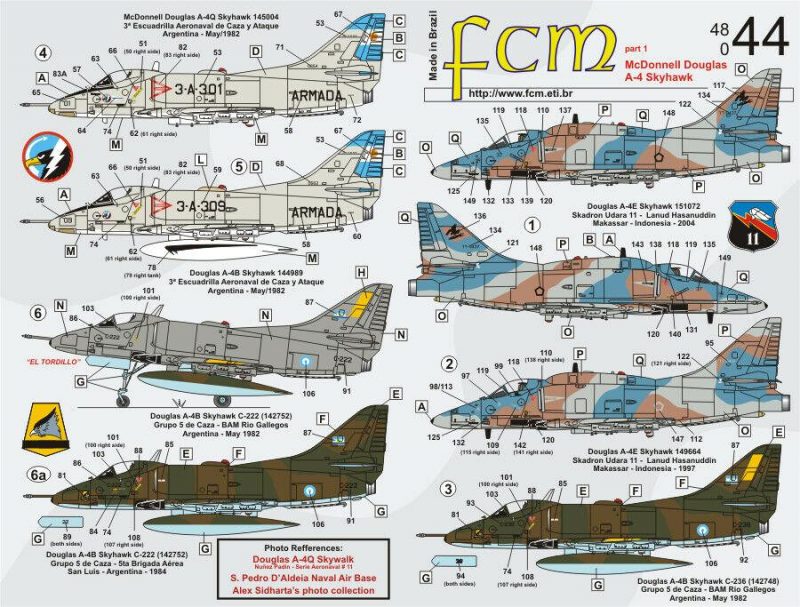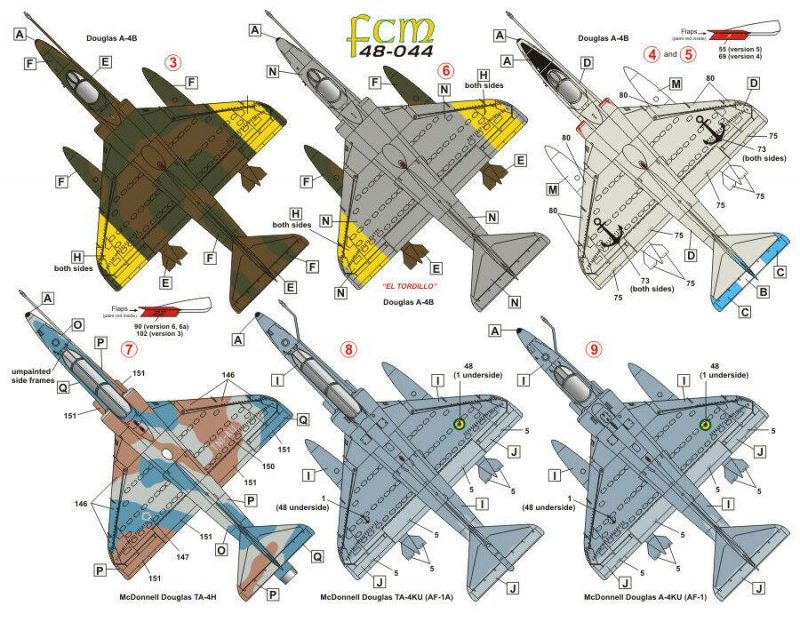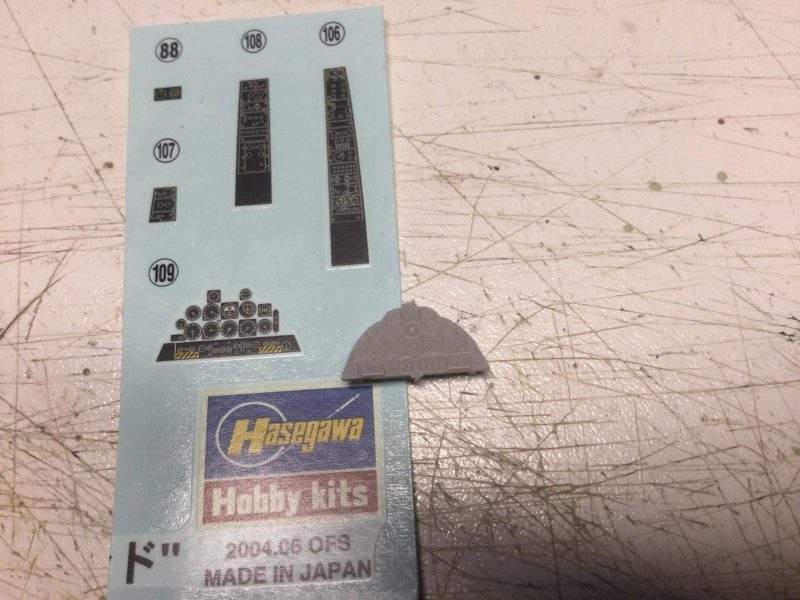Thanks, Tom, Spiros, Erik and John for your kind regards. I have been working on the model a bit but more intensively on research. What I turned up suggests there are quite a few issues with doing the box art A-4C. First of all, Hasegawa's color suggestions are almost certainly wrong and the box art is quite misleading. The instructions call for a topside camo of "Sandy Yellow" and "Dark Earth". A very thorough and well-illustrated article by Jorge Figari on Hyperscale makes a strong case that main color is actually "Off White" and the camo shade an olive or khaki green. The latter looks much greener in repainted museum examples but shades towards brown in many photos from the period of the war or earlier. Here is a link to the article:
http://www.clubhyper.com/reference/a4cargentineskyhawkjf_1.htm
The camo green is a tricky shade but I began to feel it was similar to the color I came up with for my Shiden Kai cockpit (Tamiya JA Green + Khaki). So, I went all over the net beyond Figaris article to find every photo I could of how A-4Cs of Grupo 4 were actually painted during the conflict, including how the paint scheme was modified with either turquoise or yellow ID panels. I looked at built-up models as well to see how others had interpreted the Grupo 4 scheme.
To make a long story short, I decided not to go with the Grupo 4 A-4C for a couple of reasons. First, getting accurate color matches for both the camo and ID panels looked too difficult. Second, I began to feel that the combination of the camo color with turquoise or yellow panels plus the red of the leading edge slats would just not look good to me. Sounds dumb maybe but I once binned a whole 1/48 MiG-21bis because I could not get good Egyptian sand and green colors and stripped/repainted the model one too many times. Live and learn. Anyway, as I did more research on Argentine Skyhawks, I was increasingly drawn to the earth and green scheme of the FAA's A-4Bs. I also did not have an A-4B in my collection, (the Blue Tail Fly US Navy version I did was an A-4C). I finally ordered decals from FCM to do an A-4B instead from this sheet.
-

-

When I saw these on eBay, I just couldn't resist the temptation to go for good aftermarket decals as opposed to using the thicker Hasegawa kit supplied ones. So an A-4B in green and brown with blue undersides it will be. Very nice rich colors and clearly documented. They also harmonize with the red flap details well. I hope this doesn't conflict with other subjects on the Group Build - namely with John Healy's Hobbycraft A-4Q. I didn't originally intend to step on your toes here, John but I hope its OK if we get some of overlap of aircraft and color schemes. The kits will be a contrast in design and look, I think.
Anyway, there is not a lot of build to report just yet, I am only making plans and following routines, some of which will be a departure for me.
For once in this scale, I will be NOT be doing the cockpit with Eduard pre-painted cockpit details as none are currently available. I plan to use a mix of paintwork and kit decals to do both the consoles and control panel. I will snip and punch out details rather then lay down the whole decal over the molded panel elements.
I want to get on with this build and don't want to wait for photo-etch. In any case, I have found that the real A-4B pit is quite chunky and it is more authentic to keep the raised details of these panels as molded, rather than replacing them with flat photo-etch that only simulates depth.
-

1. Strongly raised bezels are very authentic for low-tech A-4B
2. Really accurate dial detail although lacking color (maybe I could add it somehow?)
For other cockpit elements like the seat, I have glued some bits together to plan on how to add my own belts, levers and cables to the kit structure as I paint and assemble them.
-

1. I will sand off these belts and add new ones plus work on the cushion detail.
On a larger scale, I have gone ahead with attaching the A-4B nose to each fuselage half. Nice to see it taking shape.
I then began gluing together the ordinance, starting with the kit drop tanks.
I have a Hasegawa weapons set for the various bombs I will need (nothing but drop tanks in the kit). I plan to do large elements of the build while I work slowly on details. I am following Spiros in getting right into the bigger elements of assembly right away (where possible), instead of trying only to work on details first. Thanks for the inspiration, my friend. It's a good way to keep momentum up for getting projects done.
Anyway, that's it for tonight. Its more or less to let you know I haven't forgotten about this one. Thanks for watching this space.